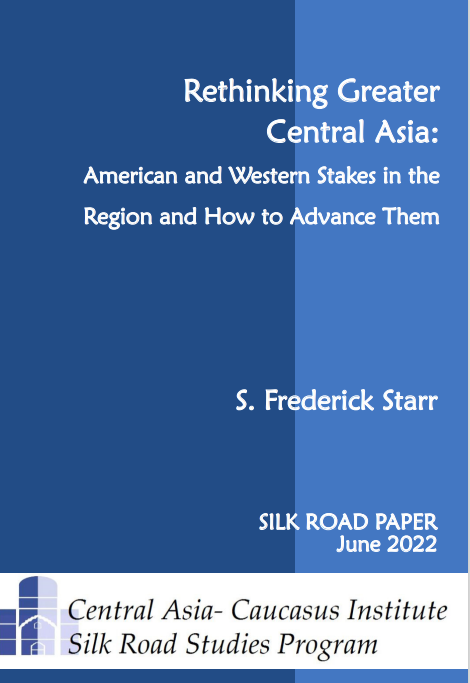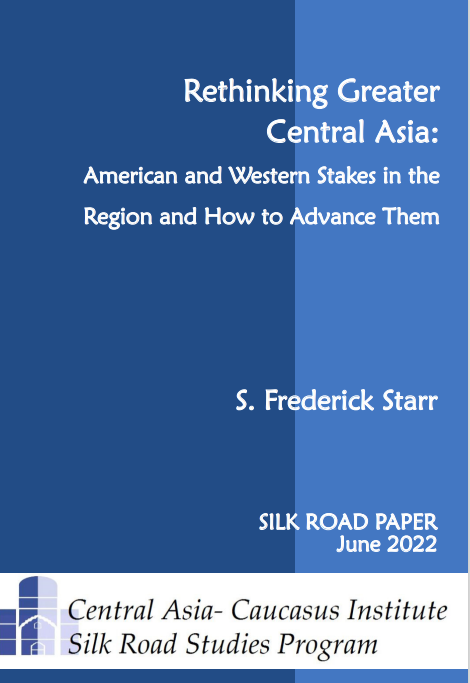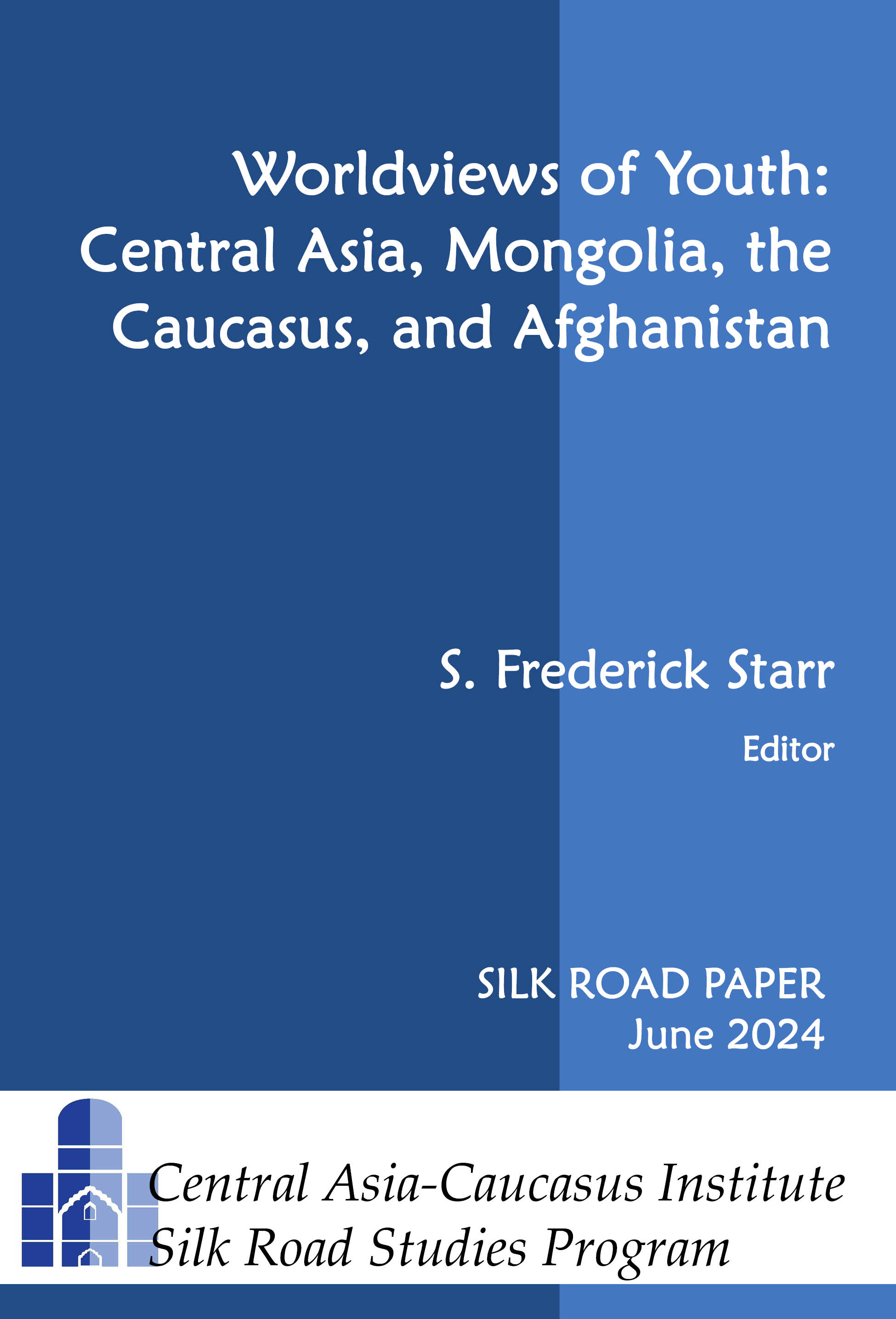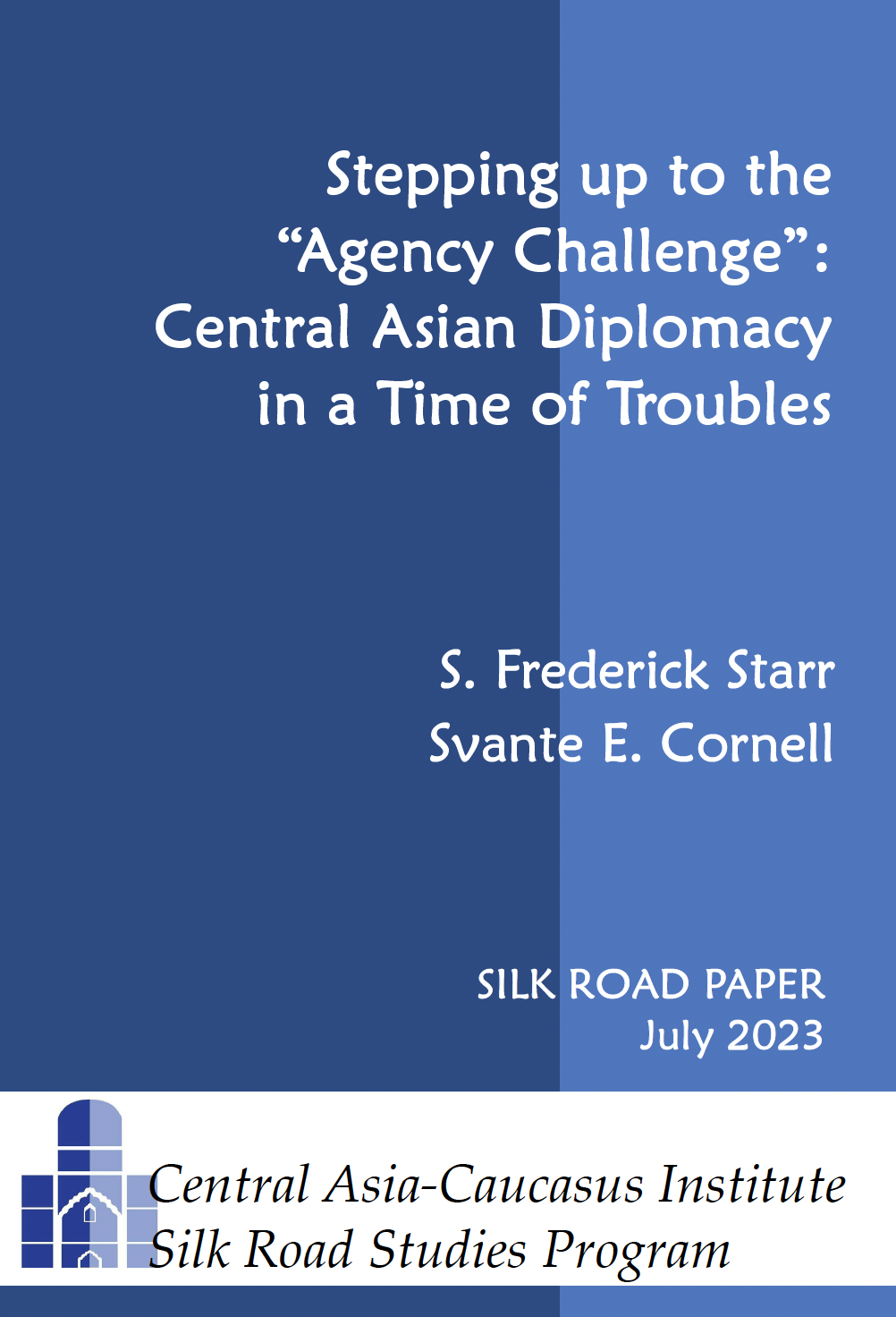Central Asia Should Move Towards Regionalism to Avoid Great Power Competition
By Omar Sadr
Long-term security in an increasingly volatile region can only be achieved through joint security frameworks and regional cooperation communities.
For a long time, Central Asia has been understood through the lenses of the “great game” and “great power politics.” With the shift in U.S. strategic interests from counterterrorism to great power competition, analysts believe that Central Asia will turn into a zone where the three major powers—the United States, China, and Russia—will find themselves with increasingly conflicting geopolitical interests. While all three are united today for a more stable Central Asia protected from radicalism, the divergence comes as each wants to supplant the others as a primary partner of the region.
Even after more than three decades of independence, the Central Asian states have had a hard time reducing their dependency on Russia. There have been shifts in certain areas—trade relations, for instance, with China gradually replacing Russia as a primary trading partner. In terms of security, as the recent Russian intervention in Kazakhstan showed, Russia has remained the region’s primary security guarantor. However, the Russian invasion of Ukraine, which revealed Moscow’s military shortcomings, presents a new opportunity for Central Asian regionalism.
Lack of Regionalism from Within
Understandably, Central Asia adopted a multi-vector foreign policy. However, given the weakness of these countries compared to Russia and China, and the lack of a coordinated regional stance, they have been tied to the regional security architecture created by Moscow and Beijing. Three Central Asian countries—Tajikistan, Kyrgyzstan, and Kazakhstan—are members of the Collective Security Treaty Organization (CSTO). Similarly, except for Turkmenistan, the rest of the Central Asian states are members of the Commonwealth of Independent States (CIS) and the Shanghai Cooperation Organization (SCO).
Russia has obstructed any sort of initiative by Central Asian nations toward fostering regionalism. Instead, it has highlighted Russia-led and Russia-owned processes such as CSTO or CIS. For instance, Russian president Vladimir Putin once said that the threat emerging from Afghanistan “can only be overcome by a global effort with reliance on the United Nations and regional organizations—the Collective Security Treaty Organization, the Shanghai Cooperation Organization, and the CIS.” As a result, Central Asia could not move toward a form of regionalism from within.
The CSTO was created to defend member states against a conventional military invasion but it has remained irrelevant to Central Asian security. The Central Asian countries have disputes over resources and borders with each other, and, while some of them remained unresolved and have even led to state-level military confrontation, the CSTO has not presented solutions for them. Moreover, Russia’s lack of success in its war in Ukraine should make Central Asia think twice before relying on Moscow for security.
If there is any major external threat to the sovereignty of the small Central Asian states, it would be the competing desire of major powers in the region—Russia and China—to increase their leverage. Most Central Asian countries consider the Russian invasion of Ukraine as a violation of Ukrainian sovereignty and have withheld cooperation with Moscow in the conflict. Unlike the Afghanistan occupation in the late 1970s, when Moscow was able to mobilize support from most of the Warsaw Pact countries, the CSTO members have refused to endorse Moscow’s stance in the current conflict. Given the presence of Russian speaking peoples in Central Asia and irredentist policy in Moscow, a Russian victory in Ukraine will present a real threat to these countries’ sovereignty.
The Need for Regionalism
On a practical note, as Jennifer Murtazashivili noted, with the withdrawal of Americans from Afghanistan and the bloody engagement of Russians in Ukraine, China may find “a greater incentive to become more involved in security matters in the region in ways they had not been in the past.” Without a clear collective vision, there is a risk that Central Asia will face strategic uncertainty or that it will gradually fall into the exclusive domain of one of the other great powers. As Russia has done in the past, China will dominate a less integrated Central Asia by dealing with each country separately. The region is also surrounded by a range of regional powers that follow an ideological policy, such as Turkey (Neo-Ottomanist ideals and pan-Turkism) or Iran (Shia centric policy).
An exclusive security dependency on the revisionist great powers is what the Central Asians should avoid. The shortcomings of Russian military power in Ukraine provide a new opportunity for Central Asians to rethink regionalism and collaboration to ensure a safe and free Central Asia. Regionalism as coordination will also prevent "divide and conquer" tactics by Russia and China.
A Path Towards Regionalism
Given the mentioned scenario, it is time for the Central Asians to take practical steps toward the formation of a security community. A security community, according to Emanuel Adler and Michael Barnett, is a group of states, a community, which has mutual trust and forms a collective identity.
In order to form a security community, the following steps are required:
First and foremost, it is important that the region develop a shared identity and values. Currently, there is a multiplicity of terms and jargon to identify the region. For instance, on the one hand, the term “central-Eurasia” is defined by the Russian orientation for which Russian right-wing intellectuals, such as Alexander Dugin, have been the main exponent. On the other hand, the term Greater Central Asia was coined by Frederick Starr to drag and draw the region as a cultural zone which cuts across the existing state boundaries. For instance, he considers China’s Xinjiang province, Russia’s Tatarstan, and the Northern part of the sub-continent as integral parts of the region. Practically, a narrowly defined Central Asia would include the five “stans.” Afghanistan is also a part of Central Asia but the Taliban-occupied Afghanistan is not conducive to regionalism.
The existence of a precipitating condition, such as a common threat, is the second requirement for the formation of a security community. To unify these countries towards the formation of a community, a common security threat would be great power rivalry in the region. Russia’s irredentist policy and the Islamic radicalism driven by groups like the Taliban, Daesh and other regional terrorist outfits are the other unifying factors.
The final requirement for the security community is the formation of an organization to function as a mechanism to foster interaction among the members. Thus, Central Asians should move forward and restore the idea of a Central Asian regional organization. This will allow interaction and social learning amongst all the countries. A multi-vector policy will be effective once the Central Asian countries are tied together in a self-generated regional organization. To better operationalize the multi-vector policy, Central Asians can adopt the omni-enmeshment approach followed by the Southeast Asian states. Elsewhere I have suggested the same policy for Afghanistan. While at the individual level, Southeast Asian countries have established multiple strategic partnerships, at the regional level they have also tied themselves to the great powers through the Association of Southeast Asian Nations (ASEAN) regional forum (East Asia Summit), ASEAN Plus Three (APT) and dialogue partners. Central Asia could follow the same path. A Central Asian community “Plus Three” could include the three great powers, namely, the United States, Russia, and China. A Central Asian Regional Forum may include the mentioned countries plus three Caucuses states, as well as Iran, Turkey, Pakistan and India.
Such a framework will not only increase the cost of any potential external military intervention, but it will also allow Central Asia to build a united policy towards many issues including an increasing terrorist threat from Taliban-occupied Afghanistan.
U.S. Policy towards Central Asia
With the U.S. withdrawal from Afghanistan, there is little chance the United States would engage Central Asia as a primary security partner through an exclusive strategic partnership. The United States also does not have a primary security or economic interest in the region. Every regional state’s desire to attract U.S. attention during the ongoing turmoil in Europe will not give fruit, much as it has not in the past.
The U.S. Strategy for Central Asia 2019-2025 outlines connectivity between five Central Asian countries and Afghanistan but ignores the critical need for regionalism. The Taliban regime is not only incapable of implementing regional connectivity projects but also increasingly creates a security challenge for Central Asia. Central Asia’s reliance on the Taliban to stabilize northern Afghanistan is wishful thinking. They underestimate the Taliban’s radicalism and their alliance with like-minded radical groups in the region. Central Asia’s connectivity with South Asia through Afghanistan could be materialized only in a post-Taliban Afghanistan. Till then, the Biden administration should encourage regionalism in Central Asia.
Currently, the Biden administration has framed the conflict in Ukraine as democracies versus autocracies. But this framing does not enable an alliance between Central Asians and the West. As autocracies, Central Asian autocrats will not ally with the United States if the framework remains Washington’s guiding principle. A better alternative would be the protection of a rule-based order versus anarchy.
A better integrated Central Asia can best deal with great power politics and growing instability from Afghanistan. The region can only overcome these challenges through fostering regionalism, collaborating and creating a security community.
Read at The National Interest
Worldviews of Youth: Central Asia, Mongolia, the Caucasus, and Afghanistan
By S. Frederick Starr ed.
Central Asia-Caucasus Institute & Silk Road Studies Program
Silk Road Paper
June 2024
Introduction
Nearly all commentators on the evolution of the countries of Central Asia, Mongolia, the Caucasus, and Afghanistan, (i.e., the “CAMCA” countries) have concentrated on older adults and ignored younger men and women. This collection focuses instead on members of the younger generation whose outlooks have been largely neglected until now.
But what, we must ask, is a generation? For a century Europeans and Americans have coined cliches to describe each rising cohort of young people. Early on they defined their subject as young men and women in their late teens and early twenties. Now the definition commonly stretches further back into the earlier teen years. At the same time, the concept of a generation has itself changed. It was once commonly defined in biological terms, which meant a period of twenty or more years. Today –at least in the West— a social and political “generation” is often shortened to only a single decade.
Why are the views of members of the rising generation in the CAMCA countries (Central Asia, Mongolia, the Caucasus, and Afghanistan) of importance? Very simply, because their life experience differs so starkly from that of both their parents and grandparents. Their parents were raised by people born and educated in the Soviet Union or in Mongolia, under Soviet influence. In every one of these countries the current generation of parents has also been challenged by personal contact with the modern world on a global scale and by their national governments’ efforts to respond to it. As a consequence, they sit uneasily on two stools, past and present, institutional and personal, and bravely try to seek a workable balance between them. As is clear from the essays below, they do not always succeed at this. It is no exaggeration to say that parental influence on source offspring across the region has diminished.
A second and obvious issue that distinguishes the young generation in all of the countries under study is their massive access to cellphone technology and the internet. This development, which contrasts to the experience of some but not all of their elders, gives them access to world-wide “neighborhoods” of like-minded people. This constitutes second and non-institutional forms of education, which contrasts sharply with what is offered in schools, but which is very powerful nonetheless. The scale of contact with this world among members of the young generation is immense. However, it often occurs at the price of reduced communication with their more diverse physical neighbors at home. Moreover, as is clear from the reviews included in this collection, the attention of young people is also focused as much or more on music and pop culture as on the subjects that dominate traditional newspapers, radio, and TV.
All of these pressures and tensions bear directly on educational systems across the entire region and beyond. Educational reform in a post-Soviet spirit has indeed gone forward in all the countries under study, but it has been slow, tentative, and bureaucratic. Worse, to the extent it exists at all, reform has been concentrated at the university level. In some countries the rising generation has been emancipated from Soviet-type training in lower schools by the appearance of a few private institutions, but these are few in number and accessible only to the well-to-do. For the most part, younger men and women across the region are still the product of Soviet-type lower schools. While this results in high competence in mathematics and basic science, it lags in both the social sciences and humanities, leaving these fields wide open to informal learning from the internet and other non-traditional sources.
It goes without saying that the contemporary world is full of continuities that often go unnoticed. Upbringing in the family, the impact of neighbors, religion, traditional life-cycle customs, and deep-rooted musical traditions all remain much as they were in the past. Yet, acknowledging this, it is hard to imagine three generations whose life experiences differ more radically from each other than those of a typical CAMCA family over the course of recent decades.
In a first effort to map at least the outlines of the rising generation across the CAMCA region, the Central Asia-Caucasus Institute turned to its own region-wide team of experts, the 280 men and women from all ten countries who have participated in the fellowship program launched fifteen years ago by the Rumsfeld Foundation and our Institute. Now a diverse band of highly accomplished members of their societies, these leaders of business, government, the professions, and press train and hire older members of the rising generation and work closely with them on a daily basis. Many also observe the young through their own children and through their children’s friends and schoolmates.
As editors, we will resist the temptation to extract conclusions from the diverse evidence in this report or to propose implications for each of the ten societies included and for the larger region of which they are all a part. This is instead the challenge which our CAMCA contributors set before each reader. To guide such reflection, we offer the following five questions: First, is it possible to speak of this region’s rising generation as a single cohort and, if so, what are its boundary ages? Second, is it possible to speak of common generational features across the entire region, or should we focus instead on smaller groupings or even on the distinct generational identities of individual countries? Third, looking forward, what degree of discontinuity should we anticipate on a national, sub-regional, and regionwide basis? Fourth, are the CAMCA countries prepared to deal with the discontinuities and changes that the rising generation may generate? And, fifth, to what degree is the entire CAMCA region coming to participate in what French sociologist Claude Levi-Strauss called “the global monoculture”?
Stepping up to the “Agency Challenge”: Central Asian Diplomacy in a Time of Troubles
By S. Frederick Starr and Svante E. Cornell
Central Asia-Caucasus Institute & Silk Road Studies Program
Silk Road Paper
July 2023
Executive Summary
Central Asia is often portrayed through metaphors such as a “Grand Chessboard” or a “Great Game,” which suggest that the players in the game are the great powers, and the Central Asian states are merely pawns in this game. The problem with this analysis is that it denies agency to the Central Asian states. This might have been a plausible argument immediately upon their independence, when these states were indeed weak. But today, thirty years into independence, it is abundantly clear that the situation has changed.
Even though China, Russia, and the West are still able to influence the evolution of Central Asia in various ways, the Central Asian states are increasingly capable of defining their individual and joint interests and translating them into concrete programs. While institutionalization of their collaboration has lagged, the Taliban takeover in Afghanistan, Russia’s war in Ukraine, and other great power actions have promoted the regional governments to link arms as never before. Since 2016 this process has advanced rapidly, accompanied by more proactive strategies by the five regional governments themselves. While Kazakhstan and Uzbekistan have emerged as leaders in this process, Kyrgyzstan, Tajikistan and Turkmenistan are all engaged with this new direction, as is their neighbor across the Caspian, Azerbaijan.
It remains to be seen whether and in what ways major powers will acknowledge this development. What is already clear, however, is that “divide and conquer” policies will no longer be effective tools for dealing with the states of Central Asia, which will increasingly use their power of agency to ameliorate and shape the approaches of major powers.
The United States and Europe can take stock of this process to expand their partnership with Central Asian states. This includes expanding Western investment in the Trans-Caspian transportation corridor, while working closely with Central Asian states to prevent sanctions evasion. Western powers should also recognize the primacy of security in Central Asian realities, and support processes of reform in the defense and security sector to help Central Asians defend themselves against the encroachments of neighboring great powers. Last but not least, the U.S. should follow the example of the EU and raise the level of its interaction with Central Asia to the highest political level.
U.S. Policy in Central Asia through Central Asian Eyes
By Dr. Frederick Starr
May 8, 2023
U.S. Policy in Central Asia through Central Asian Eyes
"Today both the countries of Central Asia and the U.S. itself face unprecedented challenges at the global and national levels... It is important for Washington to know how its positions and actions are perceived by the which they are directed. Official statements by Central Asian governments and on-the-record comments by their officials touch on this question but cannot answer it, for they often gloss over the officials’ real concerns or present them in such watered-down generalities as to render them unrecognizable. In an effort to gain a better understanding of how Central Asian governments perceive American policies we have therefore turned to the Central Asians themselves, including senior officials, diplomats, business people, local policy experts, journalists, and leaders of civil society organizations. In all, we have conducted some fifty interviews. All our subjects spoke on the condition of strict anonymity and “not for attribution.
they are directed. Official statements by Central Asian governments and on-the-record comments by their officials touch on this question but cannot answer it, for they often gloss over the officials’ real concerns or present them in such watered-down generalities as to render them unrecognizable. In an effort to gain a better understanding of how Central Asian governments perceive American policies we have therefore turned to the Central Asians themselves, including senior officials, diplomats, business people, local policy experts, journalists, and leaders of civil society organizations. In all, we have conducted some fifty interviews. All our subjects spoke on the condition of strict anonymity and “not for attribution.
Click here to read the full article (PDF)
S. Frederick Starr, Ph.D., is the founding chairman of the Central Asia- Caucasus Institute & Silk Road Studies Program Joint Center, and a Distinguished Fellow at the American Foreign Policy Council.
U.S. Policy in Central Asia through Central Asian Eyes
By Dr. S. Frederick Starr
May 8, 2023
U.S. Policy in Central Asia through Central Asian Eyes
"Today both the countries of Central Asia and the U.S. itself face unprecedented challenges at the global and national levels... It is important for Washington to know how its positions and actions are perceived by the countries towards which they are directed. Official statements by Central Asian governments and on-the-record comments by their officials touch on this question but cannot answer it, for they often gloss over the officials’ real concerns or present them in such watered-down generalities as to render them unrecognizable. In an effort to gain a better understanding of how Central Asian governments perceive American policies we have therefore turned to the Central Asians themselves, including senior officials, diplomats, business people, local policy experts, journalists, and leaders of civil society organizations. In all, we have conducted some fifty interviews. All our subjects spoke on the condition of strict anonymity and “not for attribution.
towards which they are directed. Official statements by Central Asian governments and on-the-record comments by their officials touch on this question but cannot answer it, for they often gloss over the officials’ real concerns or present them in such watered-down generalities as to render them unrecognizable. In an effort to gain a better understanding of how Central Asian governments perceive American policies we have therefore turned to the Central Asians themselves, including senior officials, diplomats, business people, local policy experts, journalists, and leaders of civil society organizations. In all, we have conducted some fifty interviews. All our subjects spoke on the condition of strict anonymity and “not for attribution.
Click here to read the full article (PDF)
S. Frederick Starr, Ph.D., is the founding chairman of the Central Asia- Caucasus Institute & Silk Road Studies Program Joint Center, and a Distinguished Fellow at the American Foreign Policy Council.



